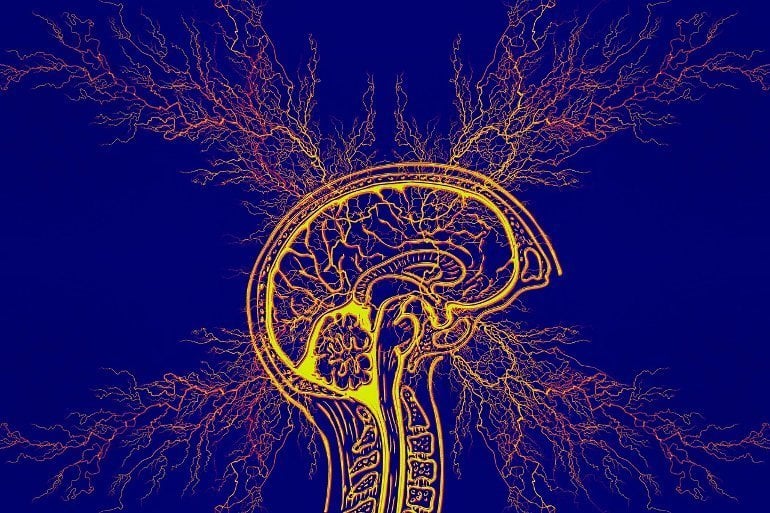Summary: Different symptoms of ASD can affect different brain regions and neuroanatomy. AI technology allowed researchers to detect brain differences on an individual level in those with ASD.
Source: Boston College
Differences in behavior among people with autism spectrum disorder (ASD) are closely related to differences in neuroanatomy—the shape of a brain—a team of Boston College neuroscientists report today in the journal Science.
This discovery could help to understand the causes of ASD, and to develop personalized interventions.
The team used artificial intelligence (AI) to study magnetic resonance imaging data from over 1,000 individuals with ASD and compared those images to AI-generated simulations of what the brains would look like if they did not have ASD.
“We found that different people with ASD can have different brain areas affected, and thanks to the AI-simulated brains, we were able to identify which specific brain regions vary among ASD individuals,” said Aidas Aglinskas, a Boston College post-doctoral researcher and co-author of the report.
“In addition, separating ASD-related variation in brain anatomy from unrelated variation revealed hidden relationships between individual differences in brain anatomy and symptoms.”
Autism differs—both in symptoms and neuroanatomy—from one individual to another. Prior research has hypothesized that there might not be a single set of neuroanatomical correlates common to all individuals with ASD.
Confirming those suggestions has been difficult because identifying ASD-specific neural alterations is a challenging task, Aglinskas said. Brains are different due to many factors, including genetic variation not due to ASD, which is hard to control for in a research study.
The team pushed past that barrier by employing AI to identify patterns of neural variability that are ASD-specific, which then allowed the team to identify neural pathways specifically affected in ASD, said Aglinskas, who conducted the research with Boston College Assistant Professors of Neuroscience Joshua Hartshorne and Stefano Anzellotti.
“ASD-related differences in brain anatomy can ‘hide’ among differences that are not related to ASD,” Aglinskas said. “As a consequence, it has been difficult to identify differences in brain anatomy that are related to differences in symptoms. We used AI to tease apart ASD-related differences from unrelated differences.”
The team set out to determine whether ASD-specific features of brain anatomy vary across individuals in a way that relates to their symptoms.
Previous studies investigating individual differences in brain anatomy within ASD did not separate ASD-specific features from other, unrelated individual differences in neuroanatomy, making it difficult to study relationships between neuroanatomy and symptoms, Aglinskas said.
With MRI data from 1,103 study participants, the team used an analytical method loosely similar to “deep fakes”—hard-to-detect simulated photographs, videos, and other images created by using visual data patterns involving the study participants, according to the report.
The team instead used computer-detected patterns to create a simulation of what each ASD individual’s brain would look like if they did not have ASD. This was enabled by a novel AI technique, which separates individual differences in brain anatomy into ASD-specific and ASD-unrelated features, the team reported.
“We were surprised to find that despite observing a large amount of variation in brain anatomy between ASD individuals along multiple dimensions, individuals did not group into distinct, categorical subtypes as previously thought,” said Aglinskas.

“At the level of brain anatomy, individual differences within ASD might be better captured by continuous dimensions than by categorical subtypes, but importantly this does not rule out the possibility that categorical subtypes might be found with other kinds of brain measurements, like functional imaging.”
Moving forward, the researchers point to a need to understand in more detail how these neuroanatomical differences affect behavior.
Anzellotti said the team plans to use the AI tools to look beyond just the brain structure for ways to better understand ASD diagnoses and the behavior of individuals with ASD.
“Two brains can be shaped very similarly but still work differently,” Anzellotti said.
“There are a number of other aspects of the brain we will need to look at to get a full picture. Right now, we are focused on functional connectivity—a measure of how the brain is ‘wired.’ A big question is whether that will show us something new about individual differences within ASD. The goal of this type of work is to be able to use brain imaging data to aid in developing personalized healthcare approaches for those with ASD.”
About this AI and ASD research news
Author: Press Office
Source: Boston College
Contact: Press Office – Boston College
Image: The image is in the public domain
Original Research: Closed access.
“Contrastive machine learning reveals the structure of neuroanatomical variation within Autism” by Aidas Aglinskas et al. Science
Abstract
Contrastive machine learning reveals the structure of neuroanatomical variation within Autism
Autism spectrum disorder (ASD) is highly heterogeneous. Identifying systematic individual differences in neuroanatomy could inform diagnosis and personalized interventions.
The challenge is that these differences are entangled with variation because of other causes: individual differences unrelated to ASD and measurement artifacts.
We used contrastive deep learning to disentangle ASD-specific neuroanatomical variation from variation shared with typical control participants. ASD-specific variation correlated with individual differences in symptoms.
The structure of this ASD-specific variation also addresses a long-standing debate about the nature of ASD: At least in terms of neuroanatomy, individuals do not cluster into distinct subtypes; instead, they are organized along continuous dimensions that affect distinct sets of regions.







